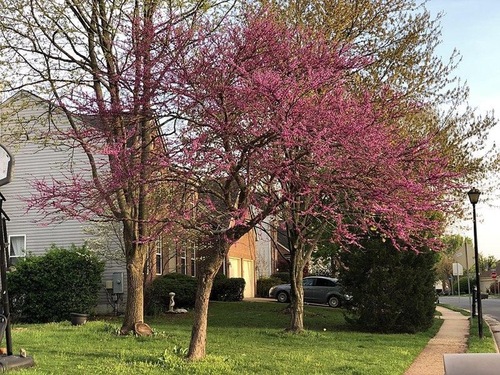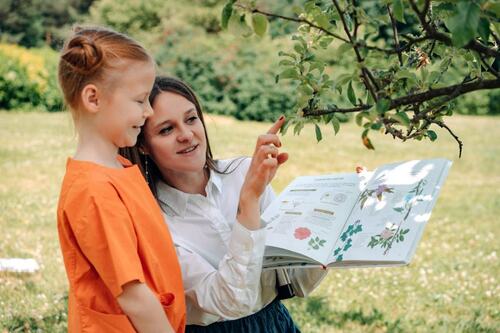A Parent’s Guide to Teaching Kids About Trees
Why Start with Trees?
The Benefits of Learning About Trees
Trees are more than just background scenery—they are vital components of our ecosystems and offer a wealth of learning opportunities. By teaching your child to recognize and understand trees, you can help them see these majestic plants not as an indistinguishable mass but as unique and interesting entities. As they learn to identify trees like the redwood or the birch, they will develop a greater appreciation for their environment.
Common Challenges and Solutions
Many parents may feel uncertain about how to start teaching their children about trees. Common questions include:
- How do you differentiate between willows and willow oaks?
- Which tree species should you introduce first?
- How many trees should you teach at a time?
The answers to these questions will vary based on your child’s age, your own familiarity with trees, and your educational goals. Start with a few easily recognizable species and build from there. Avoid overwhelming both yourself and your child by introducing new species gradually.
Basic Identification Tips

A Birch Tree with Telltale Exfoliating White Bark
Starting Simple
Begin by teaching your children to identify one or two easy species. Then quiz them over the next several days to ensure the knowledge has taken hold. You may pull into a parking lot and ask the kids to point to a birch tree, or take a nature hike looking for redwoods . Once they can identify the first species or two with regularity, teach them a few more trees. To make tree identification manageable, begin by teaching your child to recognize one or two common species. Use practical exercises like asking them to identify a birch tree in a parking lot or look for redwoods on a hike. Reinforce their learning with regular quizzes and discussions. Once they can identify the first species or two with regularity, teach them a few more trees.
Identifying Visually Distinct Trees
Certain trees are particularly easy to identify due to their unique features:
- Crepe myrtles : Known for their striking, muscular-looking trunks and branches.
- Pine Trees: Distinguishable by their bundled needles.
- Sycamores: Recognizable by their distinctive patchy white-and-gray bark
- Sweetgums: Noted for their spiky fruit.
- Beech Trees: Known for their smooth, pale bark.
- River Birches: Identified by their exfoliating bark.
You can also teach them about iconic trees that appear in your culture, such as sugar maplesYou can also introduce culturally iconic trees such as the sugar maple, featured on the Canadian flag, or the coconut palm, commonly seen in popular media. , whose leaves adorn the Canadian flag, or coconut palms ( Cocos nucifera ), which are standard fare in movies, television shows, and comic strips.
Utilizing Seasonal Changes

An Eastern Redbud with Distinct Spring Flowers – Wikimedia Commons
Learning Through the Seasons
Seasonal changes can greatly enhance your child’s tree identification skills, turning each season into a new learning adventure. Spring is an excellent time to start, as many trees display distinctive and colorful flowers that are easy to recognize. For instance, the bright purple blossoms of Redbuds are hard to miss, while Flowering Dogwoods show off their striking white or pink blooms. Summer offers a chance to observe lush foliage and the different shapes and sizes of leaves, which are often key identifiers.
As autumn arrives, the changing colors provide a vivid display of nature’s diversity. The golden hues of Hickory leaves and the deep reds of Maples offer excellent teaching moments. Encourage your child to collect fallen leaves, compare them, and identify the species they came from. This can be a fun, hands-on way to reinforce what they’ve learned throughout the year.
Overcoming Winter Challenges
Winter tree identification can be more challenging due to the absence of leaves, which are often the most obvious identifiers. However, this season offers a unique opportunity to teach your child to recognize trees by their bark, shape, and other subtle features such as buds or the remnants of fruit. For example, the smooth, gray bark of a beech tree or the peeling, papery bark of a river birch are both distinctive characteristics that remain visible in winter. While it is beneficial to point out these distinctive winter species , avoid overloading your child with complex winter identification until they are ready for the challenge. Gradually introduce them to the nuances of tree identification during this season, using it as a way to deepen their observational skills and appreciation for the subtler aspects of nature.
Advanced Identification Techniques

An Adult Teaches a Child About Trees with an Illustrated Book – Photo by Mikhail Nilov
Using Field Guides and Dichotomous Keys
As your child grows and their knowledge deepens, consider introducing more advanced tools:- Field Guides: These books, full of photos and charts, make tree identification easier. Many children may prefer digital field guides or apps for a more interactive experience.
- Dichotomous Keys: These guides use a series of questions to help identify tree species, similar to flowcharts. Understanding terms like “opposite,” “alternate,” and “whorled” is essential for using these keys effectively.
Exploring Subtle Characteristics
As your child’s tree identification skills grow, guide them to notice the subtler features that distinguish species. Beyond leaves and bark, details like the shape and arrangement of twigs, or the size and texture of buds, can be key identifiers. For example, the large, velvety buds of a magnolia differ from the small, sharp buds of an oak.
Fruit and seeds also offer important clues—think of the winged samaras of maples or the spiky seed balls of sweetgum. By focusing on these finer details, your child will develop a deeper understanding of trees and a keener eye for the diversity of the natural world.
Continuing Education and Resources
Lifelong Learning About Trees
Be sure that you continue to learn more about trees as you go—you will be amazed at how much more quickly your child will pick things up than you will. If you are not careful, they will begin teaching you before long (not that there is anything wrong with that!) Tree identification is a lifelong journey, and it’s important to continue learning alongside your child. You may find that they quickly surpass your knowledge, which can be a rewarding experience in itself!
Local Tree Care Services
For those in the San Francisco Bay Area, Arborist Now offers comprehensive tree care services. Our ISA-certified arborists can assist with tree identification and management, ensuring the health and safety of the trees on your property. Whether you need emergency tree removal or routine maintenance, we’re here to help.
Stay informed and inspired by following the Arborist Now blog for more tips and insights on tree care and identification.
Originally posted on May 31, 2021


